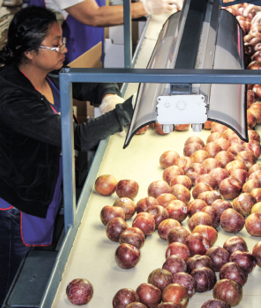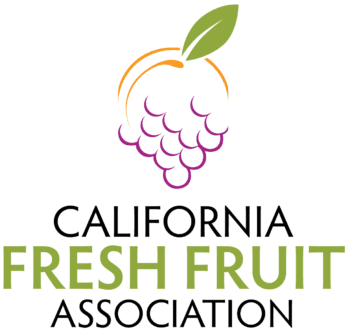Sep 1, 2021Strong year for plums gets boost from Japan market
As harvest of late-season plums ramps up, growers and others in the business say new market access to Japan should expand export opportunities for the crop. This comes as a bonus after what they describe as a strong year for the stone fruit.
Clearing the way for California plums to enter Japanese markets took about a decade of work and multiple rounds of technical negotiations to eliminate phytosanitary barriers, said Caroline Stringer, trade director for the California Fresh Fruit Association.


As a result, entry to Japan will require plant health certification standards that include strict packing and fumigation protocols, she said. Because the requirements are “very similar” to those for nectarines, she said, “we felt pretty comfortable that we can meet the same standards.” A 6% duty will be applied to California plums entering Japan.
With the plum season winding down, Stringer said she does not expect large export shipments to Japan this year, but the new access “will alleviate some pressure” on the overall market.
“As the global economy rebounds from the COVID-19 pandemic, expanding market access will continue to be critical to the industry’s success,” said Ian LeMay, the association’s president.
Harvest of California plums typically runs from May to October, with cold-storage supplies being sold into November.
State acreage continues to decline, holding at 13,800 in 2020 compared to 26,200 acres in 2010. Historically, state plantings have averaged around 30,000 acres beginning in the 1920s, according to the University of California.
Doug Phillips, owner of Phillips Farms, a grower, packer and shipper in Tulare County, said opening Japan’s market creates another outlet for California plums. But he said he doesn’t think it will be a “huge market” because of the country’s phytosanitary protocols.
Most California plums are consumed in the U.S., with 20% to 35% of the fruit destined for other countries, Stringer said. Canada remains the top export market for California plums, followed by China/Hong Kong, Mexico and Taiwan, according to 2020 data from the U.S. Department of Agriculture.
Though domestic and export markets have been “strong” this year, Stringer said agricultural exporters continue to be hampered by shipping delays on ocean freight due to bottlenecks at U.S. seaports.
“I think that’s been the biggest impediment this year,” she said. “I would not be surprised if at the end of the year we saw some pretty significant dips in exports to certain markets because of the shipping crisis.”
In addition, Chinese retaliatory tariffs on U.S. plums – imposed due to a continuing trade dispute that started under the Trump administration – have led to a decline in plum shipments to China in recent years.
“It’s hard to create buzz when you’ve got something that’s just priced out competitively,” Stringer said.
Whether exporters face tariff barriers or logistical issues, Stringer said they’ve had to make “tough decisions” as they work with customers abroad and freight forwarders to figure out how to maintain trade relationships and provide markets with California plums.
“We would rather have very reliable trade channels so that what really can shine is the quality of the fruit that we’re growing here in California,” she said.
Though fewer plums and other stone fruit have been exported this season, Phillips said “a fairly strong domestic market” has been able to absorb most of the plum volume. This is despite smaller sizing on some of the fruit due to higher temperatures during the growing season. The heat, however, boosted sugar levels and made for “excellent-quality” plums, which help maintain demand and market prices, he said.
Whereas the pandemic negatively affected demand for tree fruit such as lemons—sales of which plummeted due to restaurant and bar closures— Phillips said the bulk of the plum crop is moved through retail channels. He said those markets remain strong.
“People are still buying a lot of produce in the supermarkets,” he said. “I think they’re just consuming more than normal and eating at home more. Plus, they’re looking for healthy foods.”
But he acknowledged that difficulty securing ocean containers and other port logjams continue to hurt the state’s agricultural export business.
Because plums store well compared to other stone fruit such as peaches, most export shipments go by boat, Phillips said. Higher-value specialty products such as the hybrid cherry-plum, which he described as “a very popular export item,” do often get air-freighted.
Meanwhile, he said shipments may be increasing to Canada and Mexico because they can be reached by truck.
But soaring trucking costs, higher fuel prices, and shortages of trucks and drivers all have dealt major blows to the movement of agricultural goods, he said. Shipping fruit from California to the East Coast, for example, now costs more than $10,000 a truckload – almost double what it normally would be, he noted.
Stringer said these problems ultimately create distortions in the market, and what is needed is stability and consistency in any channel selling fruit.
“Consumers have other fruits that they can choose from,” she said. “We don’t want them to go an entire summer without having a plum.”
– Ching Lee, California Farm Bureau Federation















